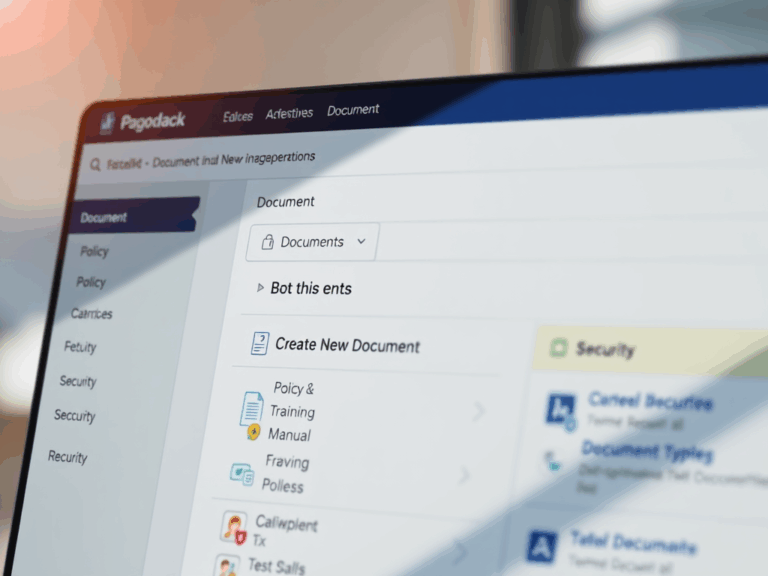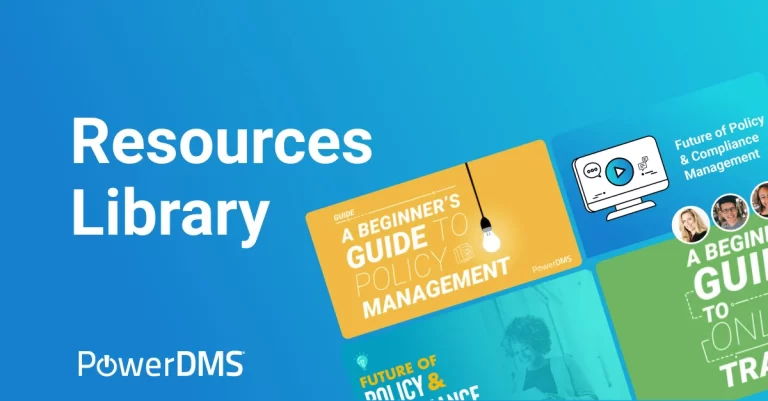How to Integrate PowerDMS with Other Applications
PowerDMS is a robust document management solution that helps organizations manage policies, training materials, and compliance-related documents. However, to maximize its potential and streamline operations, it is essential to integrate PowerDMS with other applications. Whether you’re looking to connect it with your existing software tools, automate workflows, or sync data between platforms, integrating PowerDMS with other applications can enhance your organization’s efficiency and productivity.
In this article, we’ll walk you through the steps of integrating PowerDMS with other applications, explain the benefits, and offer practical tips for a smooth integration process.
Why Integrate PowerDMS with Other Applications?
Integrating PowerDMS with other applications can bring several benefits to your organization, including:
- Improved Workflow Automation: By connecting PowerDMS with tools like project management software or workflow automation systems, you can automate repetitive tasks, saving time and reducing errors.
- Streamlined Data Management: Integration allows for data synchronization between PowerDMS and other systems, ensuring that all information remains up to date across platforms.
- Enhanced Collaboration: Integrating communication platforms, such as Microsoft Teams or Slack, allows teams to work more collaboratively by sharing and discussing documents in real time.
- Increased Efficiency: With seamless integration, employees don’t need to manually transfer data between systems, reducing the chances of human error and improving overall operational efficiency.
- Improved Compliance and Reporting: PowerDMS can be integrated with compliance and audit tools to ensure that all documents and processes adhere to legal and regulatory requirements.
Steps to Integrate PowerDMS with Other Applications
Integrating PowerDMS with other applications is generally a straightforward process, but it requires some understanding of the tools you want to connect and the integration methods available. Let’s look at the key steps for integration:
Step 1: Identify the Applications You Want to Integrate
Before you begin the integration process, it’s crucial to decide which applications or tools you want to integrate with PowerDMS. Common tools that organizations often integrate with PowerDMS include:
- Project Management Tools: Asana, Trello, Monday.com, or Jira
- Document Storage and Collaboration Tools: Google Drive, Dropbox, OneDrive, or SharePoint
- Communication Platforms: Microsoft Teams, Slack, or Zoom
- CRM Systems: Salesforce, HubSpot, or Zoho
- Compliance and Audit Tools: Qualys, ConvergePoint, or others
- HR Software: ADP, BambooHR, or Workday
Make sure to select applications that will benefit your document management and collaboration needs. Take the time to understand how these apps function and how they can complement PowerDMS.
Step 2: Check for Native Integrations
PowerDMS offers built-in integration with several popular applications. These native integrations allow seamless connectivity and often come with pre-configured settings, making the integration process much simpler.
To check for available native integrations:
- Log in to PowerDMS: Access your PowerDMS account and navigate to the Integration or Settings section.
- Explore Integration Options: Look for a list of supported apps or platforms that PowerDMS can connect with directly. Some examples might include:
- Integration with Microsoft Teams for easy document sharing and collaboration.
- Syncing PowerDMS with SharePoint for better document storage and management.
- Integration with Zapier to connect PowerDMS with hundreds of other applications without writing any code.
Step 3: Use API for Custom Integrations
If PowerDMS doesn’t offer a native integration with your chosen application, don’t worry! PowerDMS provides an API (Application Programming Interface) that allows you to build custom integrations. With the API, you can automate workflows, push or pull data between applications, and perform more advanced operations.
Here’s how you can integrate PowerDMS using the API:
- Get API Access: Request API access from PowerDMS by contacting their support team or checking your account settings. Once you get access, you’ll receive an API key, which you’ll need to authenticate your requests.
- API Documentation: PowerDMS provides detailed API documentation to help you understand how to interact with their system programmatically. The documentation will include examples of common tasks, such as uploading documents, retrieving data, or triggering actions like approvals.
- Develop the Integration: Use the API to build the custom integration. This may require knowledge of programming languages like Python, JavaScript, or PHP, depending on the application you’re integrating.
- Test the Integration: Before going live, test your custom integration to ensure that the data flows correctly between PowerDMS and the other application. Verify that tasks such as document uploads, approvals, and updates are functioning as expected.
Step 4: Use Third-Party Integration Tools
For those who prefer not to write custom code, third-party integration tools like Zapier or Integromat (now Make) can simplify the process. These platforms offer an easy way to connect PowerDMS with over 2,000 other applications without requiring any coding skills.
For example, you can set up Zapier to automatically:
- Create new documents in PowerDMS whenever a new document is added to a specific folder in Google Drive.
- Send email notifications to team members when a document’s approval workflow is triggered.
- Sync data between PowerDMS and Salesforce to ensure that customer-related documents are up to date.
Step 5: Monitor and Maintain Integrations
Once the integration is set up, it’s important to monitor its performance regularly. This includes:
- Checking Sync Frequency: Make sure data is syncing correctly between PowerDMS and the integrated applications.
- Monitoring API Usage: If you’re using the API for custom integrations, track API calls to ensure that you don’t exceed usage limits or run into errors.
- Updating Integrations: As both PowerDMS and the integrated applications receive updates, some changes may require you to update your integrations to ensure compatibility.
Best Practices for Successful Integration
Here are a few best practices to ensure smooth and successful integration of PowerDMS with other applications:
- Test Integrations in a Staging Environment: If possible, set up a testing environment where you can test the integration without affecting live data.
- Keep Documentation Handy: Whether you’re using native integrations, APIs, or third-party tools, always keep the integration documentation available for reference.
- Automate Where Possible: Automating tasks like document uploads, approvals, and notifications can save you time and reduce manual errors.
- Train Your Team: Once the integration is complete, ensure that your team is trained on how to use the new system. Familiarize them with the new workflows and tools.
- Monitor Performance: Regularly check that everything is working as expected and troubleshoot any issues promptly.
Conclusion
Integrating PowerDMS with other applications can significantly improve your document management process, streamline workflows, and enhance team collaboration. Whether you opt for native integrations, custom API connections, or third-party integration tools like Zapier, the benefits of integrating PowerDMS are clear. By following the steps outlined in this guide and adhering to best practices, you can create a more efficient and automated document management system.
Start exploring integration options today and unlock the full potential of your PowerDMS system.
FAQs
How do I integrate PowerDMS with other applications?
To integrate PowerDMS with other applications, you can either use native integrations, set up custom API connections, or use third-party tools like Zapier or Make.
Can I use PowerDMS with Microsoft Teams?
Yes, PowerDMS offers integration with Microsoft Teams, allowing you to collaborate and share documents directly within the platform.
What is the PowerDMS API?
The PowerDMS API allows developers to create custom integrations by connecting PowerDMS with other applications. It enables you to automate workflows, sync data, and interact programmatically with your documents.
Are there any third-party tools I can use for integration?
Yes, tools like Zapier and Make (formerly Integromat) allow you to integrate PowerDMS with hundreds of other applications without needing to write code.
How can I monitor the performance of my integrations?
You can monitor the performance by regularly checking sync logs, API usage, and ensuring the data flow is functioning as expected. Keep an eye on error notifications and adjust as needed.






